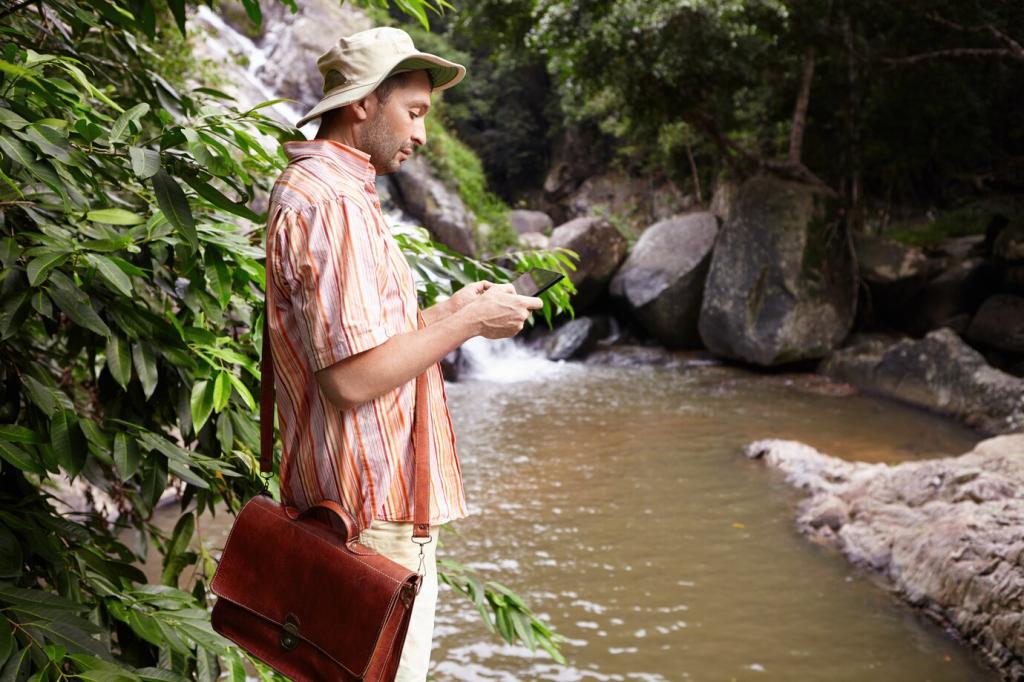
Starting Your Sustainable Fashion Wardrobe
Embarking on the journey toward a sustainable fashion wardrobe means making conscious choices about what you wear and how you shop. A sustainable approach is holistic; it considers the impact of clothing on the environment, people, and society. Whether you are a complete beginner to responsible style or seeking to refine your wardrobe with mindful upgrades, this guide will lead you through essential concepts, practical methods, and transformative attitudes for curating a wardrobe that reflects your values and tastes—without sacrificing style.

One cornerstone of sustainable fashion is the choice of materials. Eco-friendly fabrics such as organic cotton, linen, hemp, or innovative fibers like Tencel are cultivated or produced with minimal resource consumption and fewer chemicals. These options reduce water usage, limit chemical pollutants, and often biodegrade far more efficiently than synthetic fibers like polyester. Understanding labels and certifications—such as GOTS (Global Organic Textile Standard) or OEKO-TEX—can empower you to make informed decisions and identify genuinely sustainable textiles, fostering a healthier wardrobe and a healthier planet.

The journey of a garment from raw material to finished piece involves numerous people, often in far-off places. Ethical fashion production ensures that workers receive fair wages, work in safe conditions, and are respected throughout the supply chain. As a consumer, supporting brands and designers that prioritize ethical manufacturing practices enables you to contribute to more equitable industry standards. Researching a brand’s labor practices and transparency—like those recognized by Fair Trade or B Corp certifications—helps ensure your clothing choices align with your values.

Sustainable fashion doesn’t end once a garment is in your closet. Embracing the full lifecycle means considering how your clothes are cared for, how long they last, and what happens when you no longer need them. By choosing quality pieces, repairing items when needed, and ultimately recycling or upcycling clothing, you extend their usefulness and keep textiles out of landfills. Thoughtfulness at every stage, from purchase to disposal, is the true spirit of sustainable fashion.
Curating Your Core Collection
Assessing What You Own
The first step in constructing a curated wardrobe is evaluating your existing clothing. Take time to examine each item for quality, fit, and how often you actually wear it. This process highlights what you truly need and helps prevent duplicate or impulse purchases in the future. Sorting your clothes according to utility, comfort, and frequency of use can be an enlightening exercise, encouraging you to cherish what works and let go of what does not. This mindful review is fundamental to sustainability, reducing excess and waste.
Prioritizing Versatile Essentials
When building your core collection, focus on timeless, versatile pieces that are easy to mix and match. Prioritizing essentials—like a classic white shirt, tailored pants, or a simple dress—ensures each item can work across various settings and seasons. Consider color palettes and fabrics that suit your climate and lifestyle, allowing your wardrobe to serve you well whether at work or leisure. Investing in quality, adaptable garments curbs the urge for frequent new purchases and fosters long-lasting style.
Quality Over Quantity
Opting for quality garments means looking beyond trends and instead seeking out products that are well-constructed and durable. These pieces may require a higher upfront investment, but their longevity saves money and resources in the long run. Pay attention to construction, stitching, and material when shopping, examining how well a garment is made. High-quality clothing resists wear, maintains its appearance, and provides greater satisfaction, ultimately forming the backbone of a sustainable wardrobe.


Researching Ethical Brands
The landscape of fashion is changing, with more brands emerging that prioritize ethical and sustainable practices. Dedicate time to investigate which companies are transparent about their sourcing, labor conditions, and environmental footprint. Tools such as brand directories, sustainability rating apps, and certifications can guide your decisions. Remember that supporting smaller, local, or independent labels often reduces environmental impact and upholds fair labor standards, reinforcing your contribution to a better fashion future.

Embracing Secondhand and Vintage
Sustainable fashion isn’t limited to buying new items. Shopping secondhand or vintage gives clothes a second life and greatly reduces waste and resource consumption. Thrift stores, consignment boutiques, and online resale platforms offer a broad spectrum of unique and affordable pieces. Beyond environmental benefits, vintage shopping encourages creativity in personal style, allowing you to discover one-of-a-kind garments while supporting a circular economy in fashion.
